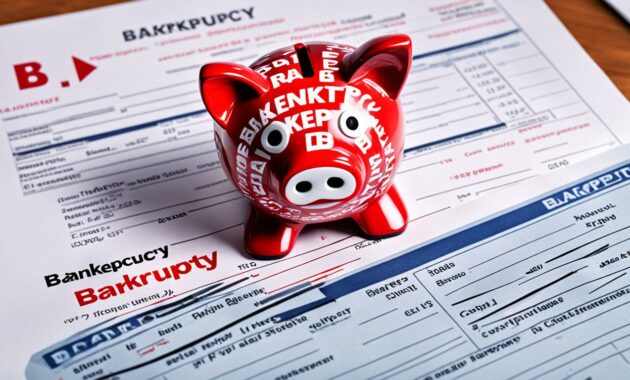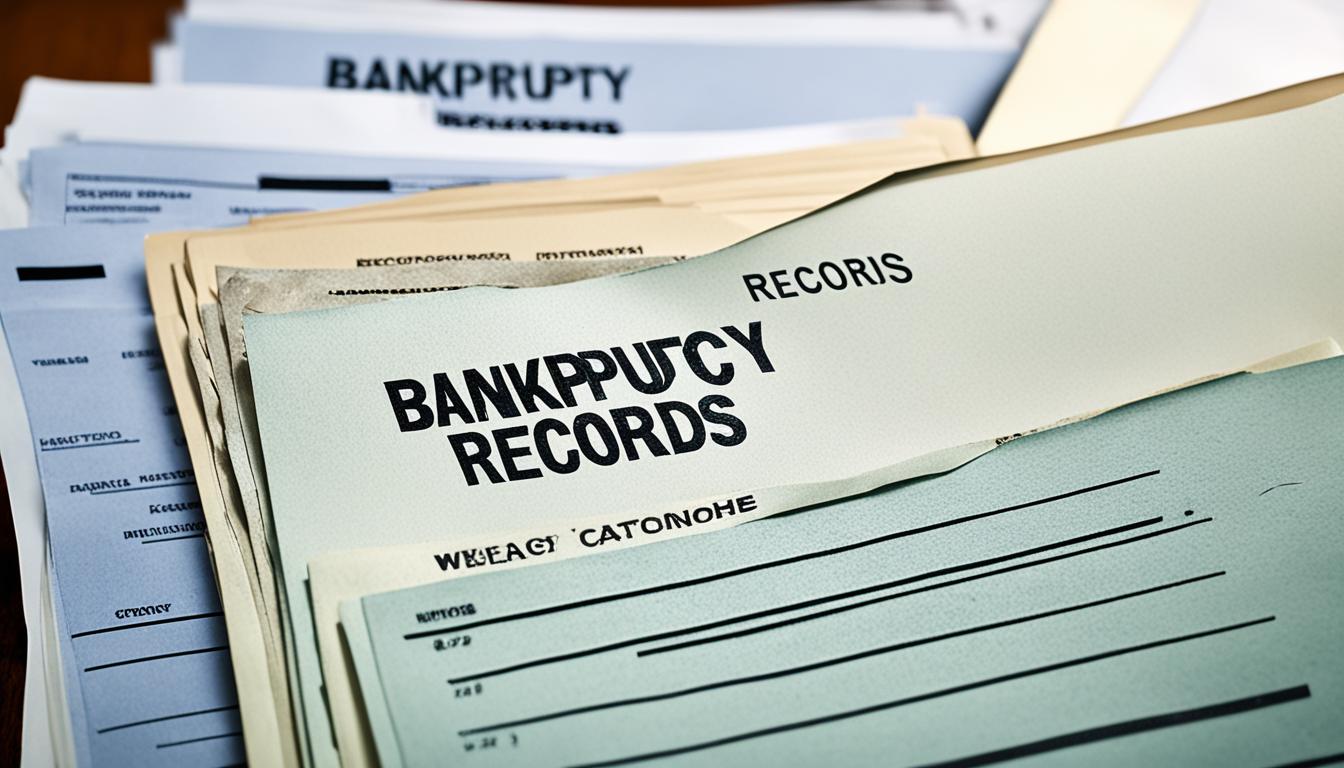Bankruptcy filings are public records. This means anyone can look them up. They include the first petition, filed documents, and the final discharge.
Each year, millions of Americans file for bankruptcy. But, these cases usually don’t get much attention. They’re listed in a PACER database. This database is mainly for creditors or lawyers. However, other people might be able to find this information too.
What is PACER and How Does It Relate to Bankruptcy Records?
PACER stands for Public Access to Court Electronic Records. It is the US government’s way for people to see court case info online. This includes details from federal courts on appeals, districts, and bankruptcy. You can find a lot about bankruptcy there, like the first petition, court schedules, and more case documents.
Public Access to Court Electronic Records (PACER)
To use PACER, you make an account and pay a little for each page you look at. By 2013, PACER had over 500 million docs. The cost was $0.10 a page to use PACER online from April 1, 2012. Before then, it was $0.08 and $0.07. If you didn’t owe over $10 each quarter, you wouldn’t be charged. But by 2019, the no-charge limit was raised to $30 due to fees being too high.
Accessing Bankruptcy Filings through PACER
PACER lets you see lots of bankruptcy-related papers, such as the first plea, court schedules, and more about the case. This is great for anyone checking out bankruptcy for business or other reasons.
- PACER tells you your account’s ready by email or paper in 7 to 10 days.
- You get billed every few months if you owe over $30.
- Each page you see, print, or save costs $0.10.
- It’s smarter to save or print docs to avoid paying to see them again.
- PACER can be used by anyone with an account, not just lawyers.
Besides PACER, services like Bloomberg Law and Lexis can show you bankruptcy info, too. It’s good to know all your options for checking out court records. This way, you can keep up-to-date and make smart choices.
“PACER is key for looking at bankruptcy files and staying in the loop on court actions. It lets you follow cases and find crucial facts.”
Is Bankruptcy Public Information?
How Bankruptcy Filings Become Public Record
When someone files for bankruptcy, this information becomes public. Everyone can see details like the person’s name and their financial information. This is because the court makes this information available to the public.
Potential Ways Your Bankruptcy Filing Could Be Discovered
Not many people look for bankruptcy filings. But, there are a few ways someone might find out:
- PACER allows online searches for court records. You need a password, mostly used by lawyers.
- Creditors are told about the bankruptcy. They stop trying to collect money from the person who filed.
- Some areas also put notices of bankruptcy in the newspaper. But not every place does this.
The ways you can find out about bankruptcy filings can change by where you live. It’s a good idea to talk to a local lawyer to know what to expect.
“Bankruptcy filings are part of the public record under the jurisdiction of the U.S. Bankruptcy Court.”
Even though bankruptcy filings are public, some personal info is kept private. Your Social Security number won’t be shown. Also, bankruptcy affects credit reports differently, based on the type of bankruptcy and how someone works to repair their credit after.
Will My Bankruptcy Show Up in Local Publications?
People often worry if their bankruptcy news will be in local papers. Bankruptcy filings are public, but not always in the news. It depends on local court rules and where you live.
In small or rural places, you might see these notices. They are usually in a special section of the local paper. But in big cities, this tradition is fading away.
Now, the news mostly shares business bankruptcies. These are more interesting for many folks.
If your case gets in the paper, it won’t tell too much. Just your name, case number, and filing date. No personal details about why you filed.
Most times, your personal bankruptcy won’t be news. The goal is to help, not embarrass. It’s about getting a fresh financial start.
Bankruptcy discharge public record,Who will know about my bankruptcy,Will everyone know I filed bankruptcy

“Bankruptcy filings are public records, but the likelihood of your bankruptcy being published in a local newspaper is relatively low, especially in larger metropolitan areas.”
Does a Bankruptcy Discharge Appear on Your Credit Report?
When you file for bankruptcy, details go into public records. This includes getting a bankruptcy discharge, showing your case is over. But, this info goes to the main credit bureaus. It stays on your credit report for up to 10 years.
Impact on Credit Checks and Background Checks
A bankruptcy discharge on your report can cause big effects. Lenders, landlords, and employers might see it as a warning sign. This could make it harder for you to get new credit, housing, or a job. It reminds others of your financial challenges, affecting how trustworthy and creditworthy you seem.
But, having a bankruptcy discharge doesn’t lock you out from getting new credit or jobs. This data is just one part of how your financial skills are judged. It could sway the decision when people check your credit or background.
| Bankruptcy Information on Credit Reports | Duration |
|---|---|
| Chapter 7 Bankruptcy | Up to 10 years from the filing date |
| Chapter 13 Bankruptcy | Up to 7 years from the filing date |
Even though a bankruptcy discharge can’t be erased from your report, you can improve over time. By paying on time, using credit smartly, and showing good financial habits, you can lessen its effect. This way, you get better chances for good credit and jobs.

“Bankruptcy is not something to be entered into lightly. It has long-lasting consequences that can impact your financial and personal life for years to come.”
Can You Remove a Bankruptcy Filing from Public Record?
There’s no way to fully erase a bankruptcy filing from the public record. Bankruptcy filings are public documents, available to anyone. But, it won’t show up on your credit report after 10 years. Still, others could see it if they check public court records.
Bankruptcy records can be checked by anyone in your state. This includes possible employers or lenders. If a judge hasn’t sealed your case, it could be found. In some cases, local newspapers might also show these notices.
But, don’t lose hope. Even though you can’t get rid of the record, you can work on your credit again. Keep an eye on your credit report and fix any mistakes you see. Over time, your credit can get better, lessening the bankruptcy’s impact.

